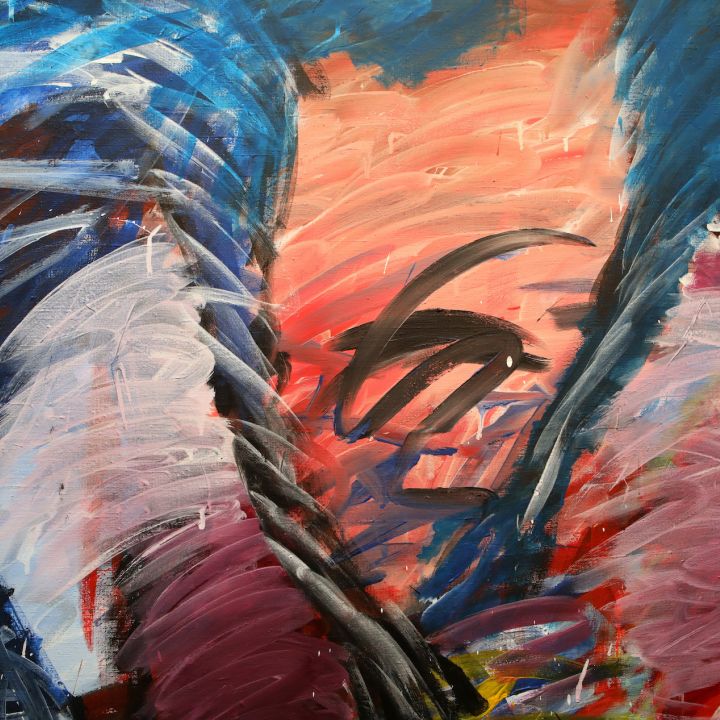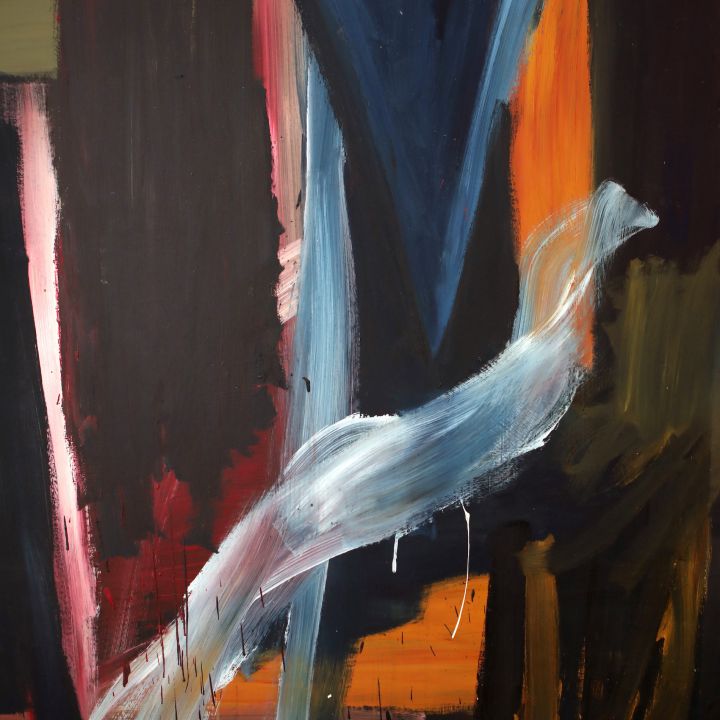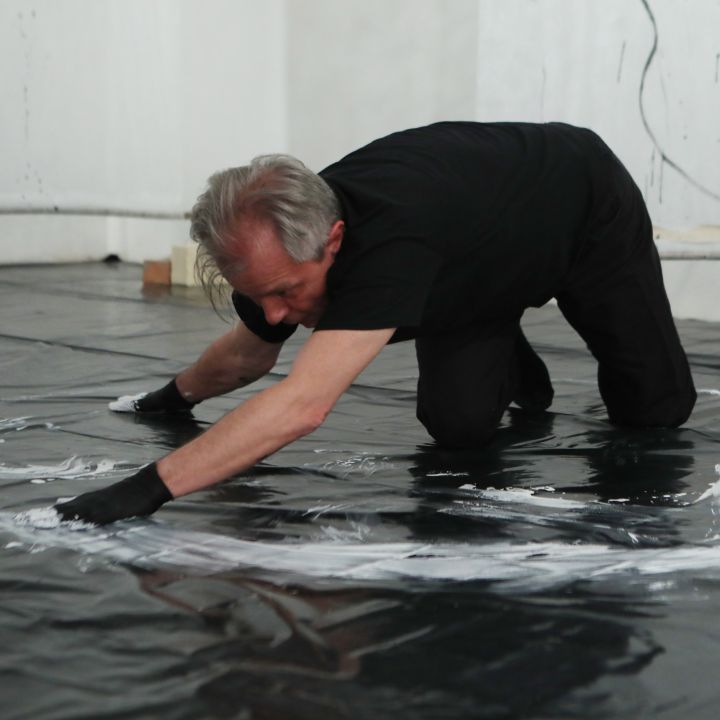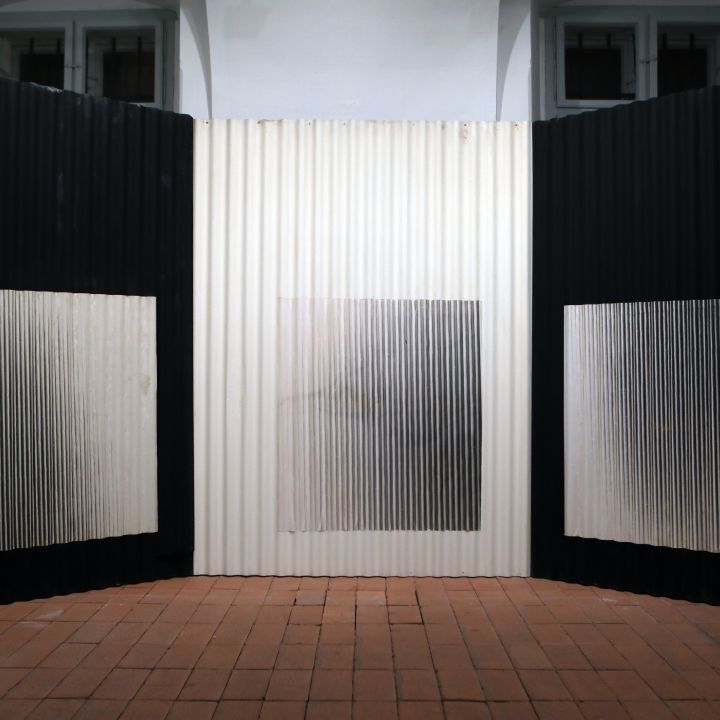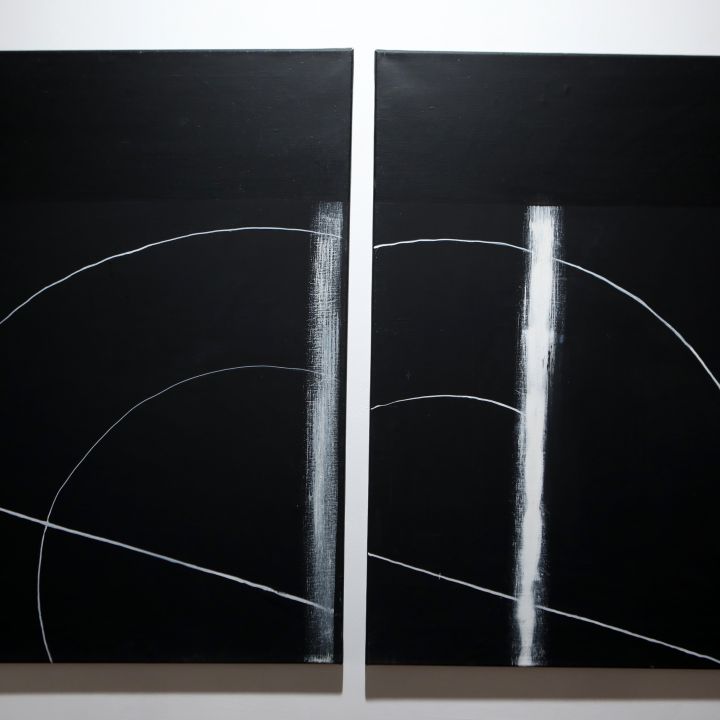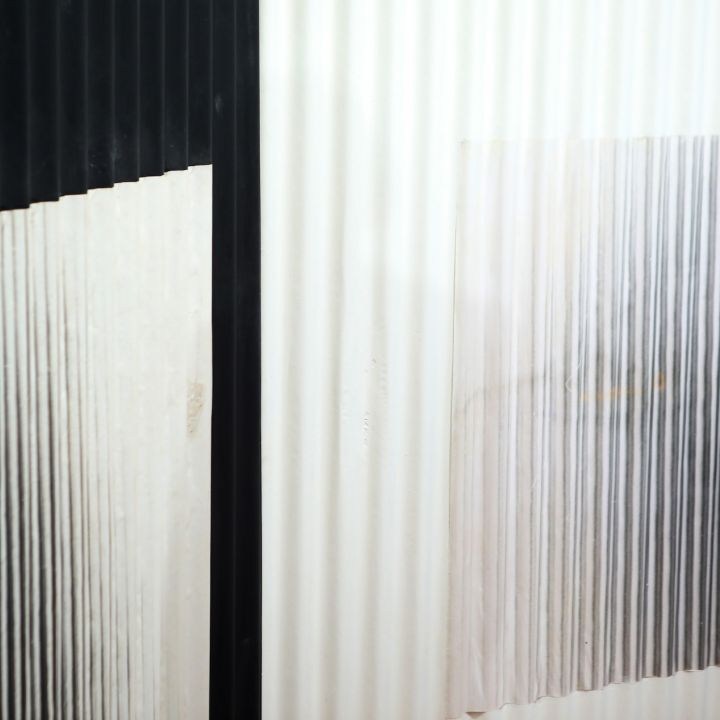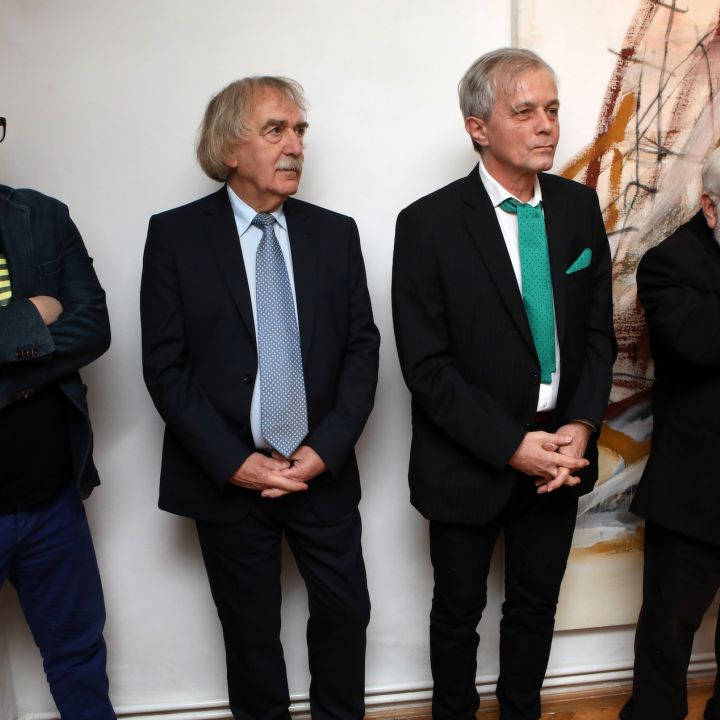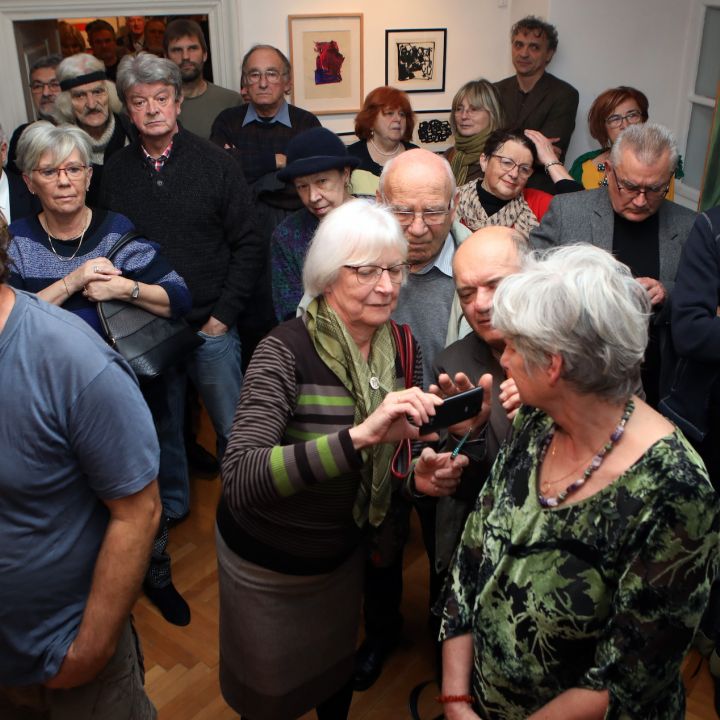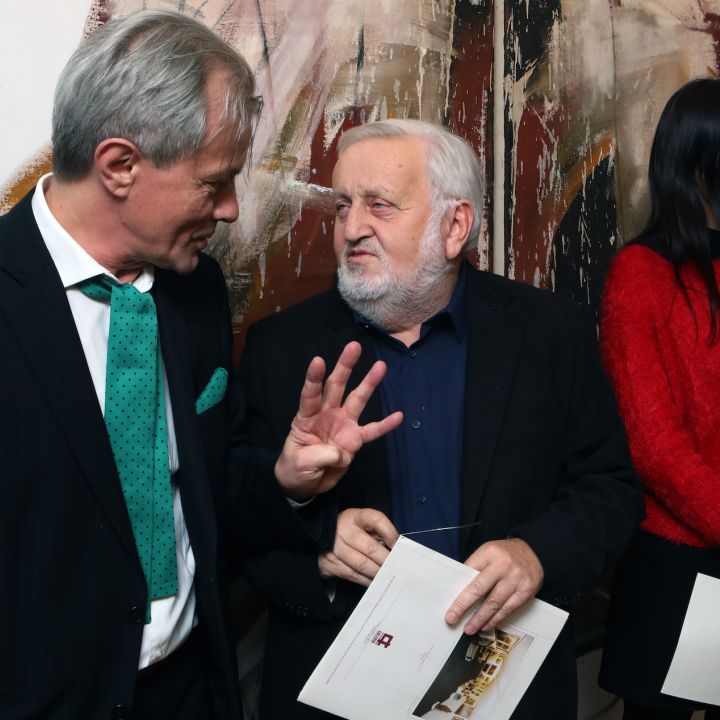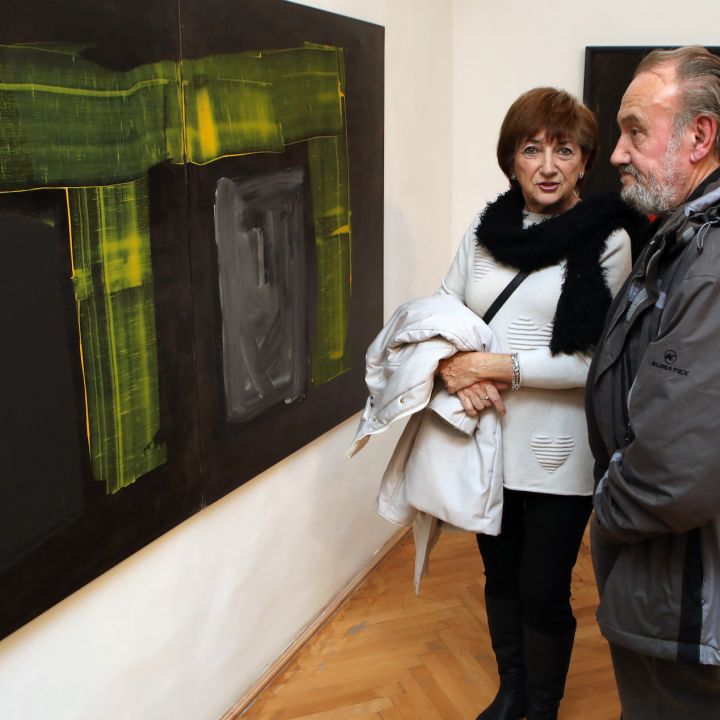László Hegyeshalmi painter's exhibition in the three galleries of the House of Arts Veszprém: the Csikász Gallery, the Castle Gallery and the Magtár Gallery.
Opening text by Mihály Praznovszky:
Ladies and Gentlemen!
My task today in this unusual and late-night triple opening is to speak about a person whose qualities are obvious to all. The majority who are present know him well and will accept my statements, which may at first sight seem to be a rapture. I do not think they are exaggerations. He is indeed one of the best in terms of ability. He has proved this both as an individual creator and as a head of an institution. It is particularly important to highlight his personality, which is a happy combination of high intelligence and above-average proficiency. Finally, to put it mildly, he is an extremely engaging personality.
Let us now talk about young László Hegyeshalmi. Also known as Kisheha. If you are young or small, you must be an elder or ’great’ Hegyeshalmi. Sadly, he is no longer with us. It is just five years since he has been directing the celestial stage or reciting Attila József to the angels. Perhaps this exhibition is partly because of this period and perhaps his son dedicates the exhibition to him.
And I commend myself to your kind attention. Or rather, my words about the exhibition. Which is easy for me to do, because I haven't seen any of it. Laci forbade me to see it in advance, because he thought it would only confuse my thoughts. Which is out of the question, of course, because I don't have a single decent thought about the exhibition. Not even because I had retired from this kind of opening role years ago and even after Laci's persuasion I just said: I'll take it if I don't have to say anything serious.
But I could be serious, since we are talking about a contemporary artist living among us, who, by the way, I could also use the adjective "a hiding artist" with some exaggeration, because he very rarely has his own solo show here, although he does occasionally appear in large, joint exhibitions. So we know less of him as an artist, at least not sufficiently. But that is his fault and his fault alone. We don't even know where he gets his red shoes, whether he has a studio, whether he works, when and how much he paints, whether he has money for canvas or whether he just settles for corrugated paper, which is very popular these days. And yet, even so, he has now amassed three museums' worth of material. It's horrible to think what will happen when he has more time to create?
I wonder whether the opening partners at the other two venues will be able to squeeze him into some kind of 'ism', or whether he will fly free, free of all categories like a bird with a brush in its beak. Although I have certainly never seen such a bird. Perhaps they even explain the exhibition titles, because all I got from that was whiskey.
Anyway, I shouldn't take the word from them, I might end up in conflict with contemporary Hungarian art. Moreover, this is a very strange choice. Obviously, it is because of the identity of the initial letters. I know the three T's, so do you. I know the three K's, but don't rejoice, this is the librarians' journal, and now we have the three P's. The situation is getting more and more complicated.
But it has been from the beginning, so I thought I would delve into the ontological descriptive modulated texts of artistic interpretation and judgement or rather of the philosophy of art to see if I could find some clues. I have successfully done so and I have come this far:
In analysing László Hegyeshalmi's work I feel it is certainly appropriate to quote Umberto Eco's concept of abductio. The assumption that a case is also subject to the law that applies to it, which is merely an assumption, hypothetical. Eco also uses the term allotopia to refer to the phantasy that is strongly manifested in Hegyeshalmi’s works, which means the creation of a world that is 'actually' more real than the real with its otherness and strangeness, utopia, which creates a reality parallel to the real but not coinciding in time. And the also mentioned metatopia and metachrony are such developments and activities that extend the factual in time and space anticipating some outcome.
One of Heidegger's definitions of the boundary is known and it is almost obvious that he wrote it in reference to Hegyeshalmi's inner artistic affinitive deconstructive attitude, i.e. : "... the boundary is not only where something ends. The boundary is that by which something gathers into its Own, to emerge from it in its totality, to come into presence."
Karl-Heinz Volkmann-Schluck says similar things about the problematic of the boundary, contributing in his own way to Hegyeshalmi's discursive narrative of the self-world: "Everything that exists, insofar as it exists, unites within itself the boundary and the boundlessness [...] In other words: the boundary is not an end, but a beginning from which something begins to be what it is and remains in it as long as it exists."
Then I realised that I don't understand this text, neither does anyone who reads it, nor does anyone who listens to it and perhaps even Laci doesn't understand it. Moreover, I did not write it, I collaged it.
But while I was wildly collecting the most frequented self-contradictions of the secondary art ideology and art problematics, I had to realize that I should not take tonight so dramatically. Because contrary to all rumours this is not a catalogue of his life's work, nor a summary of his ouvre. But why should it be? Laszlo is not so old that he would need it. Well, he's not that young, and he's 65 this year, so at best he's staged a big birthday self-directed celebration.
Seeing all this, or not seeing all this, I can imagine that if we are indeed going to have a lifetime achievement show, we will at least rent the nearby airport, if only nature doesn't take it back by then.
Think of all that is missing from the walls, some of which I really regret the absence of. Not the walls, the art. Because what is missing is always the best material. That would make three good exhibitions.
For example the Baláca series inspired by the nearby Roman villa and its fragmentary frescoes and mosaics, which had its own solo show in this particular location and was very well received. Although, if you need a ruined site, there are some in the city.
I can't find the work of the poster designer Heha, although it's also decades old and not too bad. I mainly remember his visual reinterpretations of theatre performances, which were often better than the productions. (It was not too difficult…)
And I really miss his literary series, because in these apart from the anniversary motif there is also the artist himself, because he only chose for glossing those that were close to him as literary works and life's work. For example, it would have been good to see the Petőfi series or some of its pieces, and it is particularly important to present Ady nowadays, when the new-modern culture warriors believe that they define the values of art and would send Ady to hell. And then there is his Radnóti series, which is my favourite, because we were here and there together: the pictures behind us, the elder Heha with his incredibly sensitive interpretative poetry recitation and myself with my unfortunate introductory texts.
And the photographic works are not here either, if one can be found somewhere, although this theme and genre is indicative of Hegyeshalmi's sensitivity, openness and open-minded ambitions.
So what could be on the walls? We'll find out, we have three hours a night - without a dinner break....

